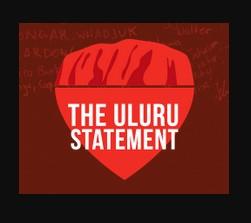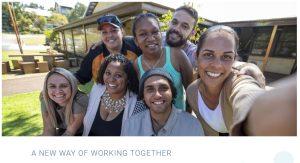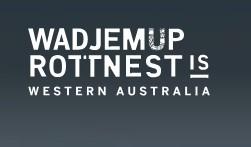Aboriginal and Torres Strait Islander Health
Optometry Western Australia (OWA) is committed to the reconciliation process with Aboriginal and Torres Strait Islander peoples in co-operation with Optometry Australia and the other optometry divisions.
Our Reconciliation Action Plan (RAP) OWA Innovate RAP 2023 2025 commits OWA to actions that seek to achieve equity in access and health outcomes for Aboriginal and Torres Strait Islander peoples.
Our aim is to build partnerships in collaboration with Aboriginal and Torres Strait Islander peoples, their representative bodies and the general health sector.
In co-operation with OA and IAHA we aim to improve and enhance our organisation’s indigenous cultural awareness and cultural safety practices.
OWA is committed to actions that achieve health equity and equality for all Australians, including Australia’s First Nations Peoples by endorsing the Uluru Statement from the Heart, which calls for the establishment of a First Nations Voice enshrined in the Constitution and seeks a Makarrata Commission to supervise a process of agreement-making between governments and First Nations and truth-telling about Australia’s history.
If you have any queries, please email admin@optometrywa.org.au
<< Back to Optometry WA home To Optometry WA – Our events >>
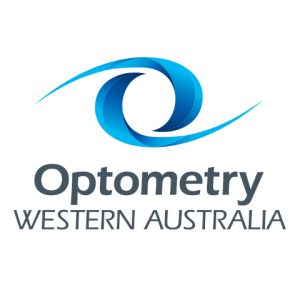
Aboriginal and Torres Strait Islander Eye Health
The Uluru Statement from the Heart
OWA is committed to actions that achieve health equity and equality for all Australians, including Australia’s First Nations Peoples by endorsing the Uluru Statement from the Heart, which calls for the establishment of a First Nations Voice enshrined in the Constitution and seeks a Makarrata Commission to supervise a process of agreement-making between governments and First Nations and truth-telling about Australia’s history.
We support the Uluru Statement from the Heart and encourage WA optometrists to research.
- Australian Government: A Quick Guide on the Uluru Statement
CLICK TO ACCESS
Closing the Gap on Health
CLOSING THE GAP ON HEALTH – REVIEW 2023.
Information compiled by RAP Committee Chair, Gary Crerie.
Aboriginal and Torres Strait Islander People are 3 times more likely to have diabetic retinopathy than the non-Aboriginal population. They are less likely to have an eye examination and have longer waits for cataract surgery.
Suicide is 6 x higher in the Aboriginal and Torres Strait Islander population than in non-Aboriginal populations and is highest in the Kimberley region of WA.
Rate of Aboriginal suicide deaths in WA were 33 per 100,000 people and 26 deaths per 100,000 nationally. 3 The general statistic reported by Australian Institute of Health and Welfare (AIHW) is reported to be 12 per 100,000 people in 2021 (with incidence in males 3 x that of females, 18 cf 6).4
- 1 IEHU University of Melbourne
- 2 Closing the Gap
- 3 Annual Report on Closing the Gap- Western Australian Government October 19, 2022
- 4 Suicide and self-harm monitoring.
PROGRESS IN CLOSING THE GAP
The closing the gap for vision report released in 2021 1 showed that 90 % of the targets set had been achieved and 96% had been completed or committed. However, there were many services impacted by COVID lockdowns, especially remote WA Aboriginal communities.
- Cataract surgeries were continuing to increase (6,0072 cf 14,243 target)
- Eye examinations for people with diabetes were around 50% cf target 100%, but were low in WA 33% (down from 36% 2 years prior)
- Trachoma hotspots reduced to 16 from 54 and communities at risk of trachoma down from 205 to 65.
Most areas of Queensland and all of the Northern Territory had Aboriginal leadership of their eye health service delivery. In WA the South West and Mid-West areas had Aboriginal Community Health leadership of eye health systems.
DOWNLOAD & READ IN FULL HERE including Closing The Gap Through Partnerships.
RAP Committee Chairperson Gary Crerie shares his experience
Compiled by Gary Crerie – RAP Committee Chairperson, OWA Director & OWA Life Member
Earlier this year I was privileged to take part in a yarn with Co-Chairs of the Uluru Statement from the Heart Pat Anderson AO 1 and Megan Davis2 United Nations Human Rights Lawyer, UNSW Professor and pro-vice chancellor.
There was discussion about our history, the similarities and differences with other colonised countries such as USA, Canada and others and the processes of recognition, self-determination, treaties and truth telling.
I also had the opportunity to visit First Nations museums in Canada and Washington DC and saw the effectiveness and otherwise of treaties. Both kept and broken.
Please read my experience document in full below by clicking the link below. Thank you.
DOWNLOAD The Voice & the ULURU statement from the heart – RAP Committee Chairperson Gary Crerie.
1 Patricia Audrey Anderson AO is an Australian human rights advocate and health administrator. An Alyawarre woman from the Northern Territory, she is well known internationally as a social justice advocate, advocating for improved health, educational, and protection outcomes for Indigenous Australian children.
2 Megan Jane Davis is an Aboriginal Australian activist and international human rights lawyer. She was the first Indigenous Australian to sit on a United Nations body, and was Chair of the UN Permanent Forum on Indigenous Issues. Davis is Pro vice-Chancellor, Indigenous, and Balnaves Chair in Constitutional Law at the University of New South Wales. Excerpt from Wikipedia:
Optometry WA and the Reconciliation Action Plan
Optometry WA and the Reconciliation Action Plan process:
We acknowledge the traditional custodians of the land in which we live and work on here in WA, we pay our respects to their Elders past, present and emerging.
This is statement (or similar) often heard and repeated but, stated without understanding and sincerity, it is worthless.
We have a strong history in OWA of engaging with and providing services for the Aboriginal and Torres Strait Islander communities. Individual optometrists also do so through the Visiting Optometrist Scheme (VOS) run by Rural Health West for the Commonwealth Department of Health and through outreach services from or in our own practices.
The board of Optometry WA has agreed to explore a Reconciliation Action Plan (RAP) to become more inclusive and supportive of our Aboriginal communities. We understand that it will take generations for true healing and acceptance to occur. It is our belief that all people and communities in WA will benefit from a process of cultural awareness, acceptance of the past, awareness of present unconscious bias and racism and a mutual path forward for better futures.
To this end Optometry WA has formed a committee to investigate the Reconciliation Action Plan (RAP) process and we hope to bring along as many practitioners, staff and family with us as feel comfortable with the journey.
Your RAP Committee
- Gary Crerie (Chair) Retired Optometrist.
- Bill Hayward. Aboriginal Community representative.
- Sinead Denny, Optometrist.
- Andrew Nguyen Optometrist.
We hope as an organisation to have completed an Innovate RAP in the next two years
With your indulgence over future months we will provide some ongoing cultural awareness information that may help you in your practices and in your communities.
In this article we address:
- Why are we undertaking a RAP for the organisation?
- Reconciliation as an important step to equal access to health care
- What is Reconciliation?
- How does that relate to OWA and Optometrists?
Reconciliation Action Plan & Relevant Links
Our Reconciliation Action Plan (RAP)
Thank you for your interest in our RAP Articles.
if you would like any further information on the our Reconciliation Action Plan or in joining the RAP Committee, please contact me on g.crerie@optometry.org.au
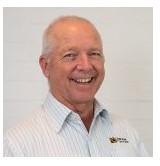
Gary Crerie – RAP Committee Chairperson, OWA Director & OWA Life Member

